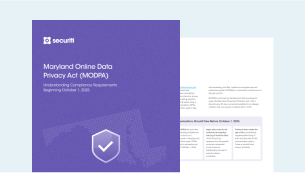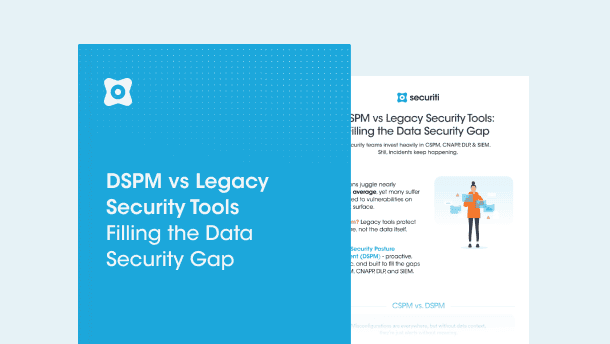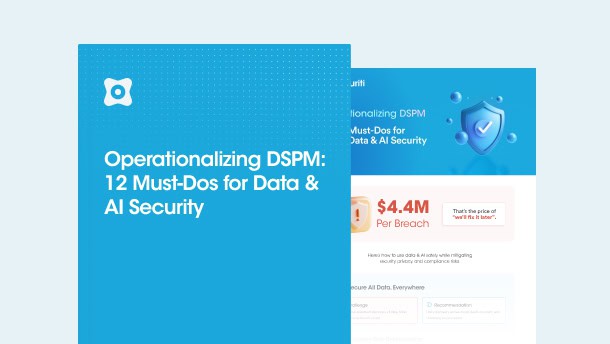Why is Two-Factor Authentication (2FA) Important?
Protecting personal data is no longer a choice but obligatory in a hyperscale data-driven digital ecosystem dominated by cyberattacks and regulated by data privacy laws. Amongst this, two-factor authentication (2FA) emerges as a stalwart protector against cyber threats.
Enhanced Security
By providing an additional layer of security, two-factor authentication goes beyond the conventional password paradigm. 2FA adds a second authentication mechanism, usually via something the user owns, such as a mobile device, minimizing the chance of unauthorized access and making it difficult for malicious attackers to compromise an account.
Mitigates Password Vulnerabilities
Even with alphanumeric passwords, accounts tend to get compromised. Relying only on passwords might expose accounts to attacks and risk of data breaches. As a strong backup, 2FA ensures access is still limited even if a password is hacked, as it requires a second mode of verification.
Protects Sensitive Data
Strong security measures are essential at a time when digital identities are integrated with personal and financial data such as email accounts, online banking accounts, etc. 2FA is an extra barrier that protects sensitive data from falling into the wrong hands.
Combats Phishing Attacks
The digital realm is witnessing increasing phishing attacks, which are attempts made by malicious actors to deceive individuals into disclosing their personal data. Even if users unintentionally provide their login credentials, 2FA is a strong deterrent against phishing since it prevents swift access to accounts.
What Are the Common Types of Two-Factor Authentication (2FA)?
2FA requires users to provide two distinct authentication factors, which is a dual-layered strategy to improve security. These components may be divided into three primary categories - knowledge, possession, and identification, and subcategories such as location-based and hardware tokens. These criteria have led to the following common types of 2FA:
Knowledge
- Password and PIN: This is the most common mode of verification where a second factor is needed to access an account after users input a password or PIN (Personal Identification Number) as the first factor.
- Security Questions: To further strengthen knowledge-based authentication, users respond to pre-established security questions.
Possession
- SMS-based 2FA: The user's registered mobile phone receives a verification code via an SMS. For authentication, the user inputs both this code and their password.
- Authentication Apps: Time-sensitive pins are generated by mobile applications such as Google Authenticator, Authy, or Microsoft Authenticator, which users need to input in addition to their password.
- Email-based 2FA: The user's email address receives an exclusive code that they need to enter to finish the authentication process.
Identification
- Biometric Authentication: This entails using unique biological characteristics for identification, such as voice recognition, iris scans, fingerprints, and face recognition.
- Retina Scans: Retinal scans are less common but still quite secure; they map the distinct vein patterns seen in the eye's retina.
- Fingerprint Scans: Fingerprint sensors are widely used as a biometric authentication mechanism in most modern-day devices, especially smartphones.
Location-based
- Geolocation 2FA: The user's physical location is used for authentication. Additional verification is necessary if an individual tries to log in from an unknown location.
Hardware Tokens
- Physical Security Keys: Devices that use NFC or USB, like Titan Security Key or YubiKey, provide a hardware-based second factor. To authenticate, users must input or press the key.
How Does Two-Factor Authentication (2FA) Address Security Threats?
2FA provides an additional layer of verification beyond the conventional password that helps combat several security risks. Here’s how 2FA addresses security threats:
Challenge for Credential Attacks
An attacker would still need the second factor—something the individual possesses—to gain access, even if they successfully get their hands on the password via techniques like phishing or brute-force attacks.
Minimized Impact of Stolen Credentials
2FA serves as a precautionary measure in the event of a phishing attempt in which users could unintentionally divulge their login information to a bogus website. The extra authentication factor continues to be a barrier even if the login and password are hacked.
Limited Use of Stolen Credentials
By requiring a second authentication factor, 2FA helps prevent unauthorized access in the case of credential stuffing attacks, in which attackers exploit compromised username-password combinations from one website to access other accounts where users have repeated passwords.
Man-in-the-Middle Attacks (MITM)
Dynamic verification codes, such as time-based one-time passwords used in 2FA, provide an additional layer of protection if an attacker manages to intercept communication between the user and the authentication server. Because these codes usually have a limited validity period, attackers have fewer chances to get around guardrails.
Protection Against Stolen Devices
Access to protected accounts still needs the second factor if a user's device is stolen. This is especially important for 2FA methods that use tangible tokens or biometric authentication connected to a particular device.
Enhanced Security for Remote Access
2FA adds an additional layer of protection to email accounts, corporate networks, and other critical systems as remote access becomes mainstream. The second element offers a crucial barrier, even if remote credentials are hacked.
Biometric Verification
The risk of biometric spoofing is significantly reduced for devices or accounts employing 2FA techniques, including biometrics (facial recognition, fingerprint, etc.). Biometric feature duplication is far more difficult for attackers than password theft.
Secures Financial Accounts & Transactions
2FA provides an additional layer of security in transactions with substantial value or crucial system access, minimizing the possibility of unauthorized access and potential financial or data loss.
Compliance with Data Privacy Laws & Security Standards
Data privacy and protection laws require organizations to implement strict security and technical measures to protect data from unauthorized access. Hence, organizations must implement robust security measures, such as multi-factor authentication, to ensure compliance with global regulations.
What Are Some Best Practices for Two-Factor Authentication (2FA)?
Incorporating 2FA into systems and accounts improves an organization’s overall security posture. Here are some recommended best practices for utilizing and deploying 2FA:
Enable 2FA Across Multiple Accounts
Enable 2FA on all accounts—banking, social media, email, and other sensitive platforms. This ensures a high standard of security across your digital identity.
Use Different Authentication Methods
Employ a variety of 2FA methods. Combine your password knowledge with a hardware token or authentication app.
Prefer App-Based 2FA Over SMS
Where possible, opt for app-based authentication methods rather than SMS-based. Unlike SMS codes, authentication applications produce time-sensitive codes locally on your smartphone, minimizing the possibility of an intruder eavesdropping.
Regularly Update and Monitor Devices
Ensure all your devices—especially the ones used for 2FA—have the most recent security patches installed.
Secure Recovery Options
Configure secure ways to recover your account. Even though 2FA increases security, you should always have a backup plan in place if you misplace your second factor.
Educate Users
Inform users about the value of 2FA and how to implement it on their accounts. Give detailed instructions on how to set up the various 2FA methods that are available.
Regularly Review and Update Security Policies
Regularly review and update security policies to address evolving technological developments and risks. By doing this, you can ensure that your organization is ahead of any possible security threats.
Implement 2FA for Remote Access
Implement 2FA for remote access on devices that require access to corporate networks and sensitive systems. This adds an additional layer of privacy for remote employees by assisting in securing access from outside networks.
Monitor and Analyze Authentication Attempts
Utilize monitoring tools to monitor authentication attempts and identify any unusual activity.
Regularly Review Connected Apps
Review linked devices and applications on a regular basis and remove access if not in use. Ensure that only trusted apps and devices have access to your accounts.
Test 2FA Implementation
To identify potential vulnerabilities, periodically test 2FA systems and patch vulnerabilities.
Stay Informed About Security Threats
Keep up with the most recent security vulnerabilities and threats. Understanding the state of cybersecurity today enables you to adapt a 2FA plan to account for emerging threats.





































